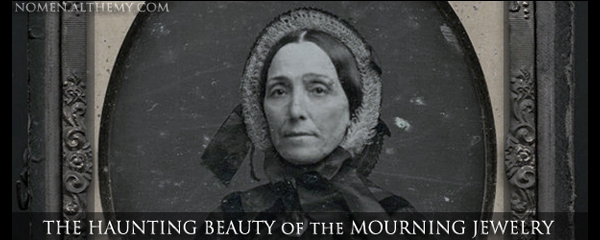There are two sides of Black in this world.
First one- black as color that our eyes see, found in every day use, art, fashion, classy but simple, peaceful but bold color. Mystery and fear, magic and glamour.
And there is the second black- The Mourning Black.
DEATH has always been important part of history, and in different times and different cultures it was presented in various ways- from fearing it to celebrating The day of the Dead, even worshiping dead and death in cults.
Latin saying "Memento Mori" (Remember that you will die) originated in Rome, and than gained popularity in Europe in the 14th century, the time of the Black Death (plaque epidemics in Europe).
Since the 15th Century the Ars Moriendi or the ‘Art of Dying’ had been a recognized model for the ideal death. And after a period of scepticism during the Enlightenment of the 18th Century, Victorian era happened.
VICTORIAN ERA was period, roughly (1830s to 1900s) that brought many changes in fashion, including changes in clothing, architecture, literature, and the decorative and visual arts. But it's often recognized as period that has been marked with specific kind fascination with death, and developed love for the beauty in darkness.
Post Mortem photography of the deceased displayed as alive and surrounded by relatives, or displayed in artistic surrounding as living model, songs dedicated to the dead, architecture and interior designs- everything became monument and sign of admiration and grief.
Accepted opinion is that the public adopted mourning fashions when in the 1861. Prince Albert, the husband of Queen Victoria died. The queen's mourning imposed on all the British court. Also, it was period of high mortality rate.


After the mid-19th century, men would wear a black hatband and black suit, but for only half the prescribed period of mourning expected of women. Widowers were expected to mourn for a mere three months, whereas the proper mourning period expected for widows was up to four years.




MOURNING JEWELRY
Since medieval times, skulls and skeletons were popular motifs, as well as hourglasses, urns, willow trees, forget-me-nots and weeping eyes. In the first stages of mourning a widow was only allowed to wear black clothes and jewelry, which led to the trend of jet jewelry(Jet is black fossilized driftwood, mined in Whitby, England).

Another form of more personal memorial jewelry was hair jewelry-rings, pendants, brooches that contained the hair of the deceased. There were several different styles-little braids of hair with different decorations such as gold, pearls, gemstones; hair shaped into lace motifs, miniature portraits and scenes made using hair... In later periods when rise of photography begun, lockets with a photograph of the deceased and hidden hair with carved date of death or verses from poem became more popular.

Main materials used were pearls, as they were considered to respresent tears, jet, gold/silver or bijoux-depending of the financial power of the owner, and gems. Dried flowers, another symbol of lost beauty were used too.

This personalized jewelry was a way to keep a part of a loved one with you forever, containing beloved lady's silky locks, little braid of strong gentlemen's hair, or kid's soft curl. Many skillful jewelers with brilliant ideas made unique pieces, for eternal memory to remain- signed and sealed in the haunting beauty of mourning jewelry.

I hope that you have enjoyed this article, tell us about your impressions in comments bellow.
N.
*Disclaimer: All images found on Google.









